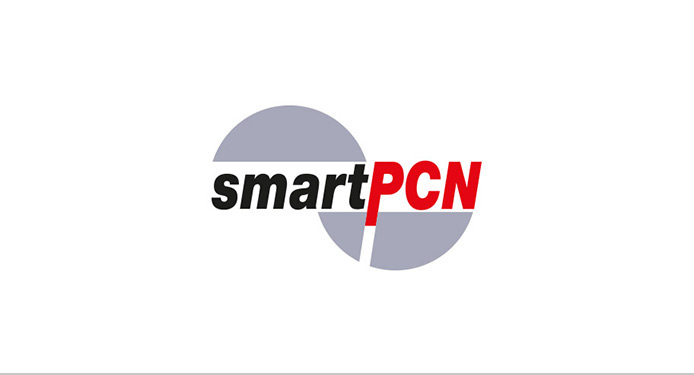
How Diehl Controls use smartPCN
Februar 23, 2021
Why have we decided to use SmartPCN within ALSTOM?
März 9, 2021
How Diehl Controls use smartPCN
Februar 23, 2021
Why have we decided to use SmartPCN within ALSTOM?
März 9, 2021
Further development – New features
DN# | What | When | Status |
|---|---|---|---|
| DN1 | Support of multi language (first English, than add on other languages) | Open | |
| DN2 | Add Company DUNS | Done | |
| DN3 | Add Global Trade Item Number (GTIN) | Open | |
| DN4 | Add originator of smartPCN (who created smartPCN from PCN) | Open | |
| DN5 | Add digital watermark/certificate and method how to verify the origin and integrity | Open | |
| DN6 | Add SCIP Numbers | Open | |
| DN7 | Communication of BOM data (BOM, changes, discontinuations) | Open | |
| DN8 | Informational PCN (no part numbers included) | Open | |
| DN9 | Resolutions: add sections (item/generic/BOM) for resolutions including resolution categories | Open | |
| DN10 | Ciphering XML tags to protect IP and make it available just for those who get the key for | Open | |
| DN11 | Effective date as a separate data field / Date code within LifeCycleData | Open | |
| DN12 | Add new item categories like procedure | Open | |
| DN13 | Add tags for item classifications like ecl@ss and other standardized classification schemes | Open | |
| DN14 | Limit character set for item number/identification to ASCII 20(hex) to 7E(hex) | Open | |
| DN15 | Introduce unique identifiers for smartPCN and items (GUID) that allow better processing in smartPCNtools | Open |
DN1 Multi language support
- Currently the language of the XML content in filePCNbody.xml is not defined. This makes an international application difficult.
- Proposal:
- The XML content in PCNbody.xml shall be always in English language
- Additional XML content in other languages areincluded in files PCNbody_language.xml which arestored in folder LANGUAGES in the attachmentsection
- In case such files exist smartPCN viewers are able toselect, open and display such files in the same wayas the standard PCNbody.xml
DN3 Add Global Trade Item NumberGTIN (proposal)
- The GTIN is added via an optional XML Tag itemGTIN using the GTIN 14 digits format
- ItemGTIN has the size of 16 characters
- In XML terms it is an element
- It is part of XML section ItemNumbers and addedto sub section ItemNumber (Level 2)
DN4 Add originator of smartPCN
- The majority of existing smartPCN are not genuine by the PCN originator but transferred from a common PCN into smartPCN format
- In this case the originator should be inserted intothe smartPCN data in order to indentify thesource of smartPCN also allowing to adresschanges
DN5 Add watermark/certificate
- It must be possible to check whether a smartPCNis genuie from a originator/manufacturer
- A method needs to be introduced using cipherkeys, certificates and checksums that is tamper-proof
- With specific software to be included in viewersand smartPCN software theencrypted watermark data and the checksum areused to check the validity against a certificateor website data
DN6 Add SCIP Reference Numbers
- SCIP reference numbers are beneficial for the SCIP declaration of products. Using a SCIP referencenumber there is no need to provide full material declaration towards ECHA for this item.
- Within ItemNumber a new section is added for SCIP
- It must be possible to declare a SCIP reference for an item, to modify it, to delete it
- Application example:
- Use a specific SCIP reference number starting from a specified caleder date (which is defined in life cyclesection)
- Remove a specific SCIP reference number starting with a specific date code (which is defined in life cycle section)
- There may be other material compliance systemswith similar requirements
- As a fast approach SCIP reference data could bedefined within a item substructure:
- The substructure gets the label SCIP-Reference
- A new document describes the XML structurewithin the substructure like XML elements andattributes, the size, the content
DN7 Communication of BOM data
- Use smartPCN to communicate bill of material (BOM) andchanges to the BOM
- New section in ItemNumber, the item is theproduct where the BOM is defined
- BOM data consists for each sub-item of
- Item number of sub-item (Ident number)
- Manufacturer item number of the sub-item
- Manufacturer alternative item number (e.g. order code)
- Manufacturer item name
- Manufacturer item description
- Manufacturer name (high level, trading name)
- Number of this sub-item within the product
- Change attributes: new, modified, deleted, discontinued,replaced, alternative (e.g. several sub-items with the same ident number defined as alternatives/resolutions)
- Description of the change
- Applications
- Definition of BOM along supply chain in a standardformat
- Declaration of changes and discontinuations within a BOM
- Declaration of resolutions/alternatives/replacementswithin a BOM in case some sub-items are not available (short term, country specific, material compliance)
- The BOM information can be used by the recipientto do obsolescence tracking independently
DN8 Informational PCN
- Informational PCN (no part numbers included)
- There are more and more PCN that just provide an information (e.g. changes about the company structure of the manufacturer). Usually there is no reference to part numbers.
- The proposal is to create a new type of PCN that does not need a reference to part numbers. The PCN is used to distribute information about the company, even the closing of the company.
DN10 Ciphering XML tags to protect IP
- Ciphering XML tags to protect IP and make thecontent available just for those who get the key forit
- There are two possibilities:
- Ciphering of the complete PCN which requiresdeciphering before import
- Ciphering of the XML tag content which means the tag isfully visible but the content of the XML tag is ciphered
DN11 Effective date as a separate data field / Date code within LifeCycleData
- Currently there is the double usage of a datafield/XML tag (someone in VDMA group insistedheavily on this):
- In case of PCN it is effective date
- In case of PDN it is end of production date
- There should be a dedicated field for effective date(means the date a change is valid) within the pcnand the items life cycle sections
- A new data field for Date Code should beintroduced to make changes also dependend on data codes or serial number of parts
DN12 Add new item categories
- The list of item categories needs to bereviewed and extended
- An entry for procedure could allow to describe thechanges for specific test, calibration,maintanance or operation procedures
DN 13 Add tags for item classifications
- Add tags for item classifications like ecl@ss and other standardized classification schemes
- In order to allow the use of different schemes in parallel, there is an open list with two XMLelemts per entry: the classification scheme nameand the classification value
- Alternatively there are fixed XML elements for themost common classification schemes
